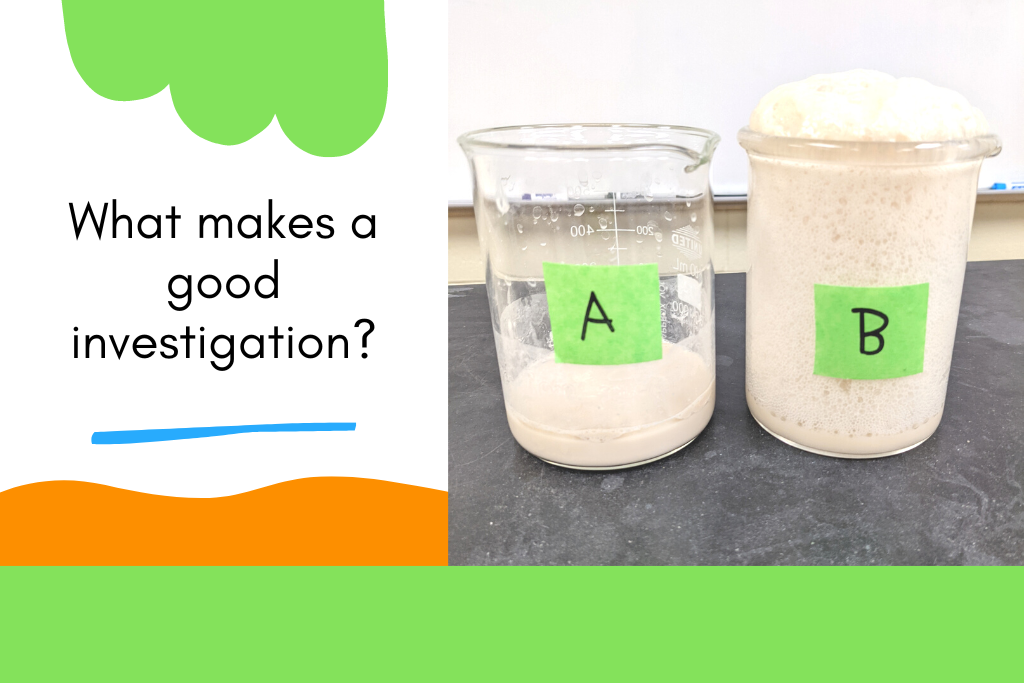Planning and carrying out investigations is one of the science and engineering practices (SEPs) that are used to help students gain more skills in engaging in science. In this practice, students plan and conduct investigations to answer “big questions” (science) or develop a solution to a problem (engineering). This can be done as an individual or in a group.
This tends to be one of the practices that students love the most. They really feel like they are “doing science”! However, it can be difficult for students to grasp.
Let’s dive in a little deeper to see what this SEP – planning and carrying out investigations – is all about! It is a huge part of bringing the WOW Factor to your science classroom!

Planning and Carrying Out Investigations in Science and Engineering
Scientists and engineers use investigations to describe the world and to explain how the world works. In science, an investigation occurs in the field or in the lab. In this process, they investigate to collect data. From the data, they can draw conclusions. For engineering, they use investigations to determine design criteria and parameters. In addition, they use investigations to test their design.
How Have Things Changed in the Classroom?
When I was in school, I don’t remember actually planning investigations and carrying them out. I might have done this for a science fair or something, but it definitely wasn’t a part of the day-to-day in my science classes. I don’t even remember doing this in high school or college! (I guess I’m showing my age!); however, there was a decent amount of conducting investigations going on, but they were more of the cookbook labs. We knew how to carry out an investigation, but we were not familiar with planning it!
When students do these type of cookbooks lab, they can’t really explain what they did. They just follow the instructions the best they can and see what comes of it.
Now, we want students to strive to plan their own investigations then carry them out. That’s what science is all about! It’s about discovering something new, and starting with something you are curious about (the questions).
This could take a bit longer than your normal cookbook lab; however, there are so many skills that are gained in the process, and their content knowledge will stay with them better through this approach.
If this is a process that students are not familiar with, it could take more time, but the time is worth it. You can scaffold investigations to help with the process.
What Makes a Good Investigation?
In this SEP, students plan their own investigations and carry them out. This is where students follow the process of science (could be the scientific method – which has been called a myth, but they follow similar steps to carrying out an investigation). It can be complex! This lesson goes over the complexity the process of science.
When designing an experiment, students will make a prediction and test it in a controlled setting to reach valid conclusions.
Overall, you want your students to:
- address a phenomenon or design
- identify what evidence should be collected
- create a plan (question, hypothesis, variables, constants, controls, data, explanations, reflections)
- Students should plan what they do before they do the investigation.
- collect the evidence
- improve the investigation
- What didn’t work?
- What can we change to get better evidence?

This is a practice that students will need to do over and over again to get the hang of, and if they start at a younger age, it will be better! Designing an experiment takes practice!
- The first thing they will need to get the hang of is asking questions. Do they know the difference between a scientific question and a non-scientific question? Can they ask questions that they can create an investigation for to answer the question?
- For example, in this activity, students are asked to come up with their own small investigation to learn more about magnetism. Students are exploring the phenomenon of magnetic attraction.
- They will need to come up with a question to ask such as, “How does the type of material impact its interaction with bar magnets?”. They can test this with different materials listed in this activity: nails, coins, rocks, keys, cotton balls, etc.
- They will also need to explore the variables, constants, and controls? In this case, the independent variable will be what the student “changes” in the experiment. In this case, it would be the type of material, like coins, rocks, etc. The dependent variable would be whether there is magnetic attraction or not with those materials.
- The constants will be things such as the bar magnet used and the distance from the other materials. There really isn’t a control group in this type of investigation.
At the end of the complete investigation, students will be about to draw conclusions and communicate their findings.
What Does Planning and Carrying Out Investigations Look Like for Middle School Students?
Middle school students should be able to do everything in the previous section.
The biggest change in this practice for the progression from elementary school to middle school is that their investigations use multiple variables to obtain evidence to support explanations or solutions.
I hope your students enjoy planning and carrying out investigations!
More Resources for Planning and Carrying Out Investigations
What’s Inquiry-Based Learning?
Help your students master science content!



[…] Planning and Carrying Out Investigations […]